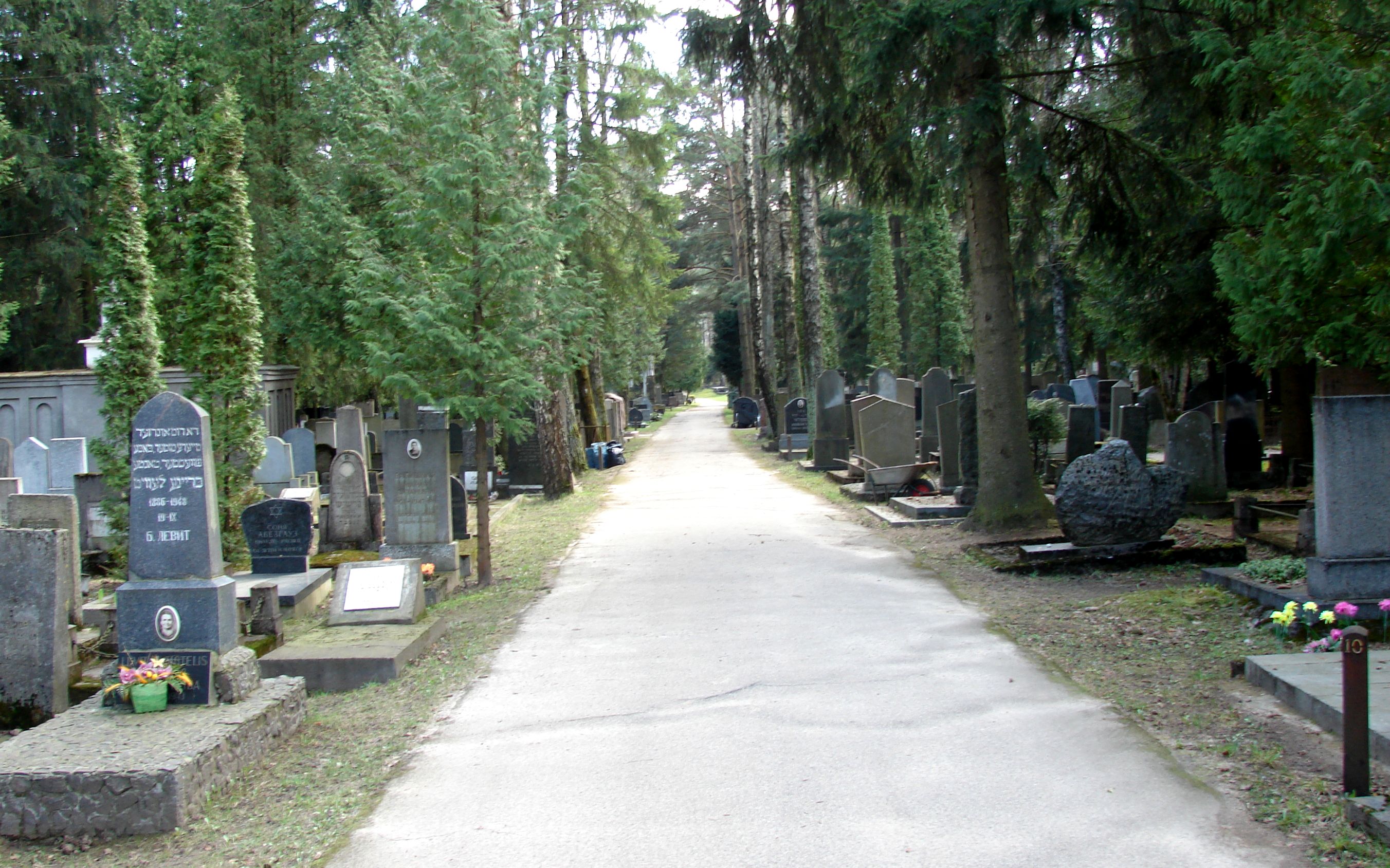
Dear members, staff and friends,
Please join us this Sunday morning for a clean-up of the Jewish cemetery at Sudervės road no. 28, Vilnius, beginning at 10:30 A.M. Thank you!

Dear members, staff and friends,
Please join us this Sunday morning for a clean-up of the Jewish cemetery at Sudervės road no. 28, Vilnius, beginning at 10:30 A.M. Thank you!
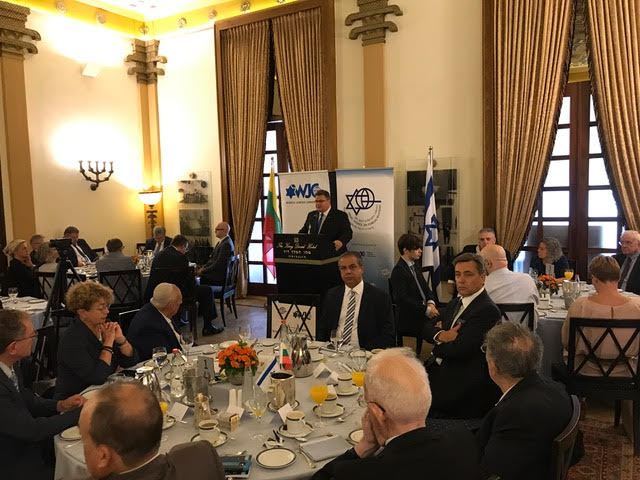
“This year Lithuania and Israel mark the 35th anniversary of diplomatic relations. We value what our countries have in common and seek to become even closer,” Lithuanian foreign minister Linas Linkevičius said at the function.
Lithuanian Jewish Community chairwoman Faina Kukliansky traveled with the Lithuanian delegation to Israel and met with Litvaks living there, who congratulated her on her re-election as chairwoman and wished her the highest success. The meeting was warm and hospitable with home-made dishes made by Litvaks. They agreed in discussions to work together with the Jews of Lithuania and in the near future to discuss broad possibilities and goals in that cooperation.
The Lithuanian Foreign Ministry reported meetings with Israeli leaders included positive assessments of growing bilateral economic cooperation, growth in trade, increases in tourism and successful cooperation in research and development. They also discussed security threats in their respective regions and agreed to push for more cooperation in the fields of energy, defense and cyber-security.
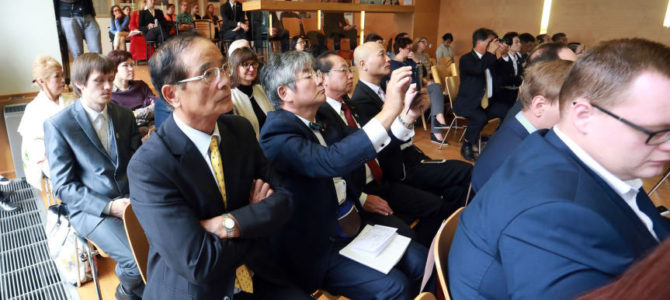
15min.lt
For Japanese people he is a hero, known to all, from the youngest child to the oldest person. The diplomat Chiune Sugihara is also well known in Lithuania. Even so, greater attention to his life and deeds is only know being paid. A group of scholars, public figures, politicians and diplomats from Lithuania and Japanese discussed Sugihara’s extraordinarily heroic deed at a conference in Kaunas September 6.
Full story in Lithuanian here.
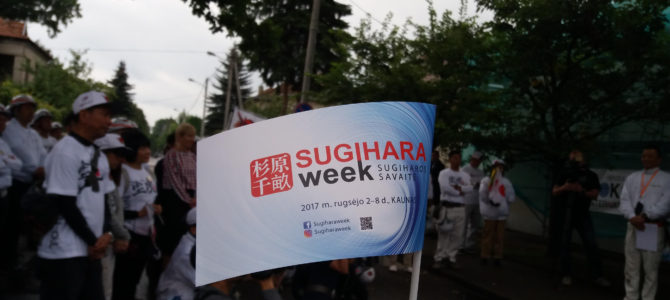
Events for the Sugihara Week being celebrated in Kaunas are scheduled from September 2 to 8.
Sugihara Week is a series of events to commemorate Japanese diplomat and Righteous Gentile Chiune Sugihara’s life and deed. From 1939 to 1940 Sugihara and Dutch consul Jan Zwartendijk saved over 6,000 Jewish lives from the Holocaust by issuing so-called visas for life.
“Consul Sugihara has become ever more known in the world and I am happy ever new ways to commemorate his heroism are appearing. It is significant that this wonderful initiative for a Sugihara Week came from Kaunas, which is the epicenter of the entire Sugihara story,” Toyoei Shigeeda, Japan’s ambassador to Lithuania, said.
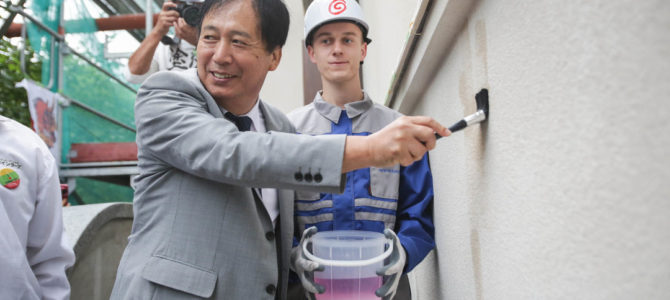
Kaunas, September 4, BNS–A group of painters dressed in white just arrived from Japan gathered at the residence and now museum of famous interwar Japanese diplomat and Righteous Gentile Chiune Sugihara Monday to help in the renovation of the building.
Tokon International chairman Keiichi Yasuda, whose company sent the painters, told BNS the painters wanted to help and make people happy.
“There are many companies which do everything for money, but money doesn’t bring happiness, the meaning of life is not money, but happiness, and we wanted to do something to help make people happy,” Mr. Yasuda said.
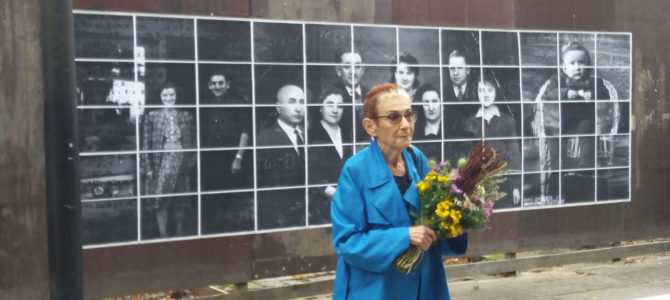
Saturday a week-long celebration of Japanese diplomat and Righteous Gentile Chiune Sugihara began in Kaunas, Lithuania. The audience learned of Sugihara’s life-saving mission in concert with Dutch consul Jan Zwartendijk which resulted in over 6,000 Jews being saved from the Holocaust. The events included creative workshops, lectures, screenings of films, concerts and exhibits for young and old.
by Ona Šimaitė
translated by Gloria Berkenstat Freund
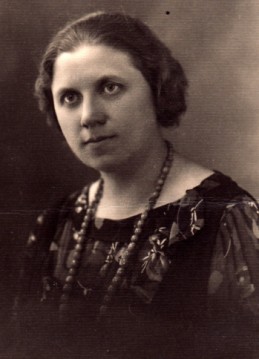
At the time of the Second World War, Lithuanian-Jewish relations took on a sharply tragic form that could not have been imagined in earlier times. As a Lithuanian woman, it is bitter for me to assert that during the years of the worst torture of the Jews by the Germans, not all of the people in my country showed an elementary, humane sympathy to their Jewish neighbors of many generations and the worst of the Lithuanians–to my great pain!– even had their hand in the extermination.
The Lithuanian Special Squad (Ypatingasis Bûrys) together with the Nazis murdered Jews in a series of places. Such scoundrels as Babialis, Piragius and others will remain accursed not only by Jews, but also by Lithuanians.
Lithuanian police divisions not only carried out Hitler’s orders to kill Jews, but in many localities they themselves asked to do the mitzvah [commandment, usually translated as “good deed”) of murdering Jews or they randomly initiated various persecutions. I had more than one occasion to watch how Lithuanian policemen fined Jews for trifles and how hard-hearted and malicious they were during the deportations of Jews in the ghetto. Even leading the Jews to death, deeply degenerate Lithuanian policemen did not have the elementary tact not to show–during the last tragic hours of thousands of lives–their animal-like fury.
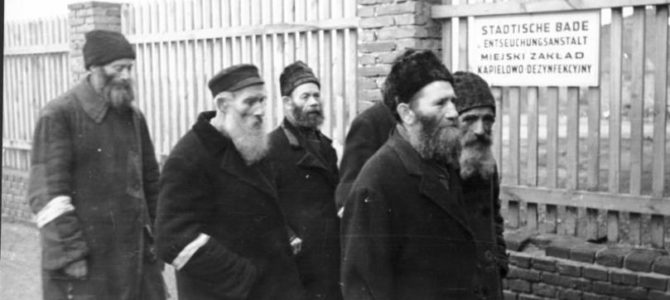
Jews in the Radom ghetto, May, 1941. Photo courtesy German Bundesarchiv.
by Ieva Elenbergienė
“The Holocaust is not just a horrible story which happened a long time ago and to someone else. If we want humanity never to experience genocide again, we must understand that this is our history, not just ‘theirs,’ which happened not ‘somewhere’ but right here, to us,” political science professor Dovilė Budrytė said during our interview. Budrytė teaches at Georgia Gwinnett College, part of the higher education system of the US state of Georgia, which awarded her for best teaching within the state college and university system. Her list of publications includes books on traumatic experience, memory and multiculturalism.
Presenting the events of history in a human context, they become closer to us, they become visible through the prism of personal experience. So in teaching the Holocaust, is it possible to speak very emotionally about human nature?
“Now, as the world faces war and ecological crises, it’s popular to research how people act in catastrophes, how they resist, how human dignity is preserved. The history of the Holocaust is the basis for so-called resilience studies. It’s interesting to look at, for example, how some Jews entered into armed resistance while others were passive, believing they needed to be patient and wait for the situation to improve. But how would I act in that sort of situation? What does it mean to be not just a victim or a perpetrator, but an observer? After all, that category of people was the largest in Lithuania during the Holocaust. Is the role of witness innocently guilty? This is a very broad question which applies today to us as well. In the US, for example, we and the students talk about elected senators and presidents whose policies, let’s say, some people really don’t like and even seem threatening. The students think about ‘what will I specifically do now? Will I even lift a finger? What must happen for me to act? And what will I do? And why?'”
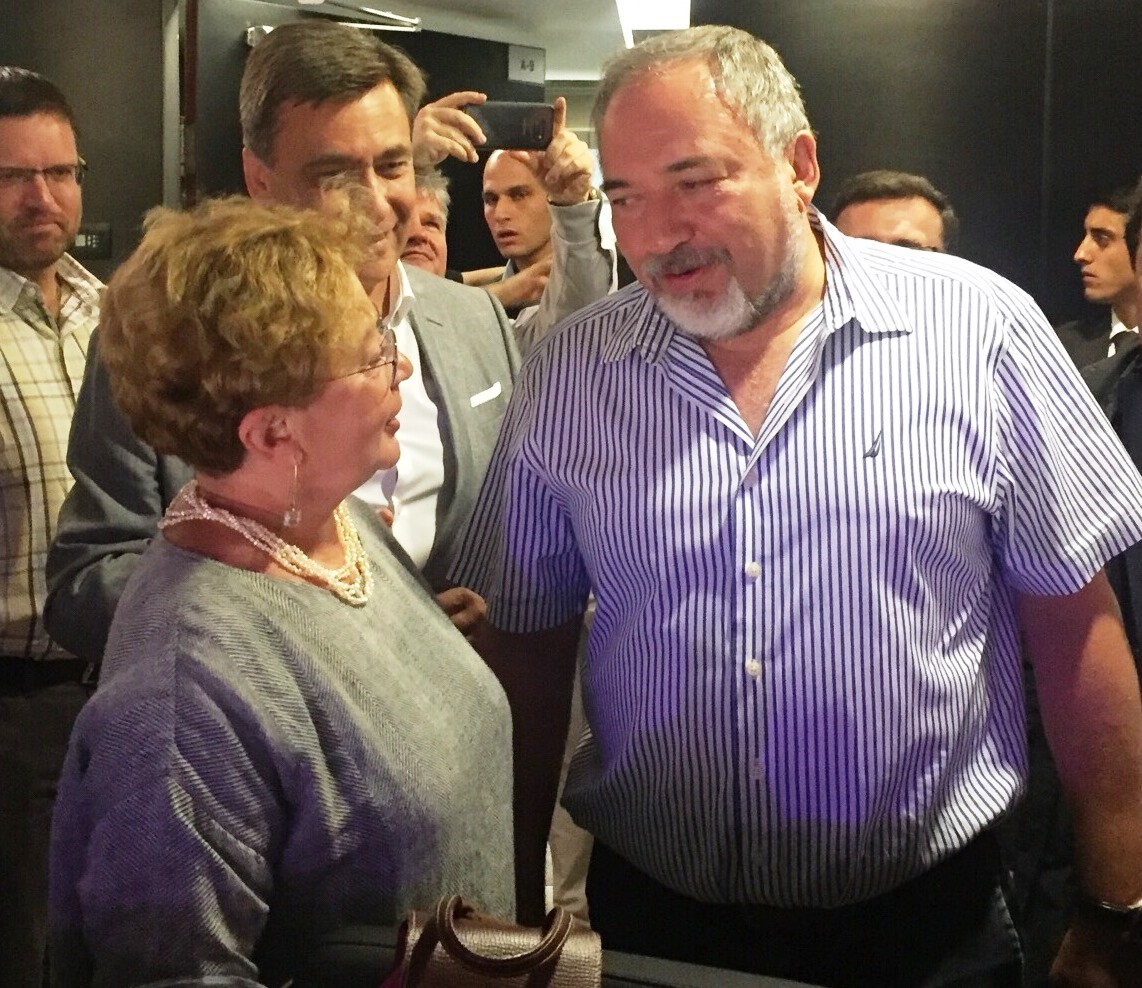
On August 2 a Lithuanian Foreign Ministry delegation led by foreign minister Linas Linkevičius and which included Lithuanian Jewish Community chairwoman Faina Kukliansky watched a Lithuanian-Israeli basketball game in Tel Aviv. After the game Kukliansky met an old acquaintance, Israeli defense minister Avigdor Lieberman, and they discussed current events in the Lithuanian Jewish Community and security issues at the Community.
The Rokiškio teatras association is carrying out a project to commemorate the Olkin family from Panemunėlis, Lithuania. The family was murdered in the Holocaust. The Panevėžys Jewish Community is a partner in the project. The play Nutildytos Mūzos [Silenced Muses] based on real events will be performed at 4:30 P.M. at the Rokiškis Regional History Museum on September 8 as part of the project. At 6:30 P.M. a statue commemorating the poetess Matilda Olkin will be unveiled at the Panemunėlis railroad station. A monument to commemorate the murdered Olkin and Yoffe families will be unveiled at Šeduikiškės village at 7:30 P.M. All events are open to the public.
Goal and Tasks of Competition
–to popularize swimming among Makabi Club members;
–to select the best swimmers to compete at the international Maccabiah Games.
Time and Location of Competition
The competition will take place from 11:00 A.M. to 1:00 P.M. on September 17, 2017, at the Girstutis Multifunction Sports and Entertainment Complex at Kovo 11-osios street no. 26 in Kaunas, Lithuania.
Our deepest condolences to Markas Buslovič and his family and friends on the loss of his beloved wife.
Union of Ghetto and Concentration Camp Prisoners and Lithuanian Jewish Community
Moisejus Benderskis has died. He was born April 8, 1937, and passed away on August 11, 2017. He won many chess championships and prizes over the years. The Lithuanian Jewish Community mourns his passing with the Kaunas Jewish Community, where he was a member.
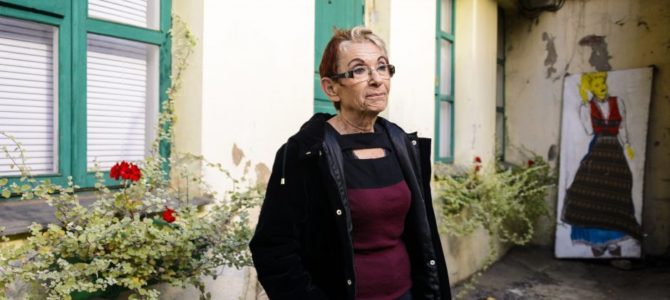
The parents of artist Bella Shirin (formerly Bela Šifrisaitė) miraculously survived the Dachau concentration camp. They moved to Kaunas after the war where Bella was born. At 17 she and her parents moved to Israel, in 1963, but she says she always missed her hometown.
She came back to Kaunas in 2004, and last year moved permanently to Lithuania’s second largest city. She says she felt happy again following the move. Now the artist lives next to the street of her childhood, Freedom Alley, and makes a daily practice of trying to bring Jews and Lithuanians closer.
Kaunas residents will soon have several opportunities to get to know the life story of the Kaunas: European Capital of Culture 2022 ambassador. On September 2 celebrations of Sugihara Week began in Kaunas and the Litvak Photography Center will present a photo-collage of Shirin’s family history there. The artist herself was to appear the same day at the opening concert for Sugihara Week at Vytautas Magnus University in Kaunas, and was to speak at the Sugihara symposium scheduled for September 6.
Full story in Lithuanian here.
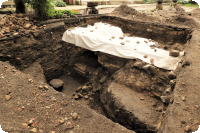
information from the Cultural Heritage Department under the Ministry of Culture of the Republic of Lithuania and other sources
A commission for assessing cultural heritage real estate from the Cultural Heritage Department has provided legal protection to the remains of the Great Synagogue in Vilnius. The Great Synagogue of Vilnius was one of the largest religious institutions in Eastern Europe. It was renowned as an important Jewish spiritual and educational center and put Vilnius on the map as a center of Jewish scholarship. The Cultural Treasures Registry lists the construction (fragments of brick wall dating from the 18th century and entrance to the synagogue, southwest wall fragment with niche for the aron kodesh and eastern wall fragment), architectural features, remains of the former building complex including mikvehs dating from the late 19th century, a utility trench on Žydų street and cultural strata as valuable and protected features of the synagogue complex.
Originally the site hosted a wooden synagogue, believed to have been built around 1573. It burned down and was replaced at least once. In 1630 and 1633 royal grant was issued to allow a brick and mortar synagogue to be built there.
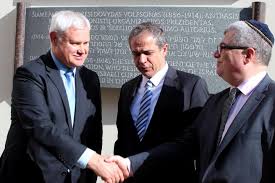
Klaipėda Jewish Community chairman Feliksas Puzemskis has been appointed chairman of the Ethnic Minorities Council of the city of Klaipėda. The Lithuanian Jewish Community congratulates Feliksas on the important appointment and wishes him the highest success in this new post!
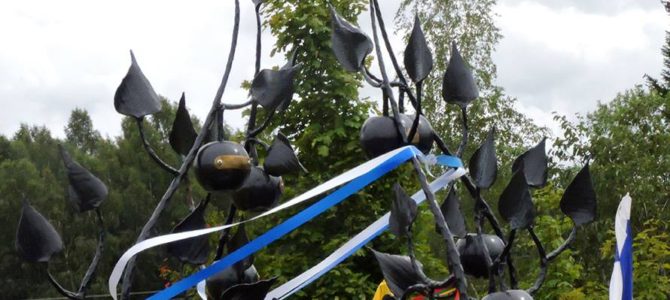
A metal apple tree was “planted” at the Litvak Commemorative Garden in the Žemaitija National Park by the Jakovas Bunka Charity and Sponsorship Fund to commemorate the former Jewish community of Žagarė, Lithuania. The metal sculpture was made by Artūras Platakis. Rabbi Kalev Krelin, Jewish rescuer family member Leonas Levinskas and Israeli ambassador to Lithuania Amir Maimon attended the ceremony in mid-August in Medsėdžiai village near Plungė, Lithuania.
September 20
Competition “Who? What? Where?” for students at the Panevėžys Jewish Community, Ramygalos street no. 18, Panevėžys. The theme of the contest is Holocaust events in Lithuania. The competition starts at 2:00 P.M. There will be six teams from schools and gymnasia in the area. Each team will have 5 members and 1-2 teachers from each educational institution. In total 35 participants will compete.
September 22
Rosh Hashanah celebration at the Rojaus paukštė café, Respublikos street no. 4a. Starts at 6:00 P.M. Please register by September 12 with Zinaida Zaprudskaja to attend this event.
September 23
Commemoration of Jewish Genocide Day: at 1:00 P.M. there will be a commemoration at the statue of the Jewish mother on Atminites square; at 1:30 P.M. there will be an excursion to the Holocaust mass murder site in the Kurganava forest; at 2:00 P.M. there will be an excursion to the Holocaust mass murder site in the Žalioji forest; at 2:30 P.M. there will be a screening of a documentary film about Auschwitz at the Panevėžys Jewish Community, Ramygalos street no. 18, Panevėžys.
Please register with Zinaida Zaprudskaja by September 12.
A bus will carry visitors to the sites, departing from Atminities square at 1:30 P.M.
All events are supported by the Goodwill Foundation.
![]()
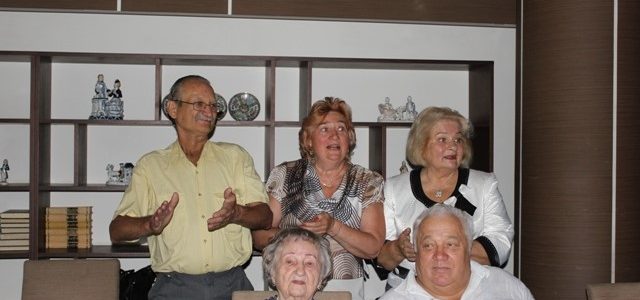
On August 20 the Kaunas Jewish Community threw a birthday party for Righteous Gentile Aldona Radzevičienė (maiden name Norvaišaitytė), who just turned 90. KJC chairman Gercas Žakas and KJC Rescuers Committee chairwoman Judita Makevičienė attended the festivities. Mrs. Radzevičienė didn’t just sit passively through all the well-wishes and gift-giving, but got up and danced the waltz and even performed a song.
Although she doesn’t make a big deal of it, as a young teenage Mrs. Radzevičienė helped her parents Uršulė and Juozas tremendously and the entire family took part in rescuing Alper Kirkilovski, Haim Chernevski, the sisters Shenke and Tzipke Vėberytė and the Shavel family from Kaunas in the Vilkaviškis region of Lithuania during the Holocaust. The had a hideout in the forest during and during the winter they slept in the barn. Juozas Norvaišaitis was arrested by the Nazis after neighbors informed on him. He was deported to Saxony in Germany and nothing further was ever heard of him. All of the Jews the family rescued survived the Holocaust. The father, mother and Aldona Radzevičienė were recognized as Righteous Gentiles in 2001.
Happy birthday to Aldona Radzevičienė, to whom we bow our heads. May you live to 120!
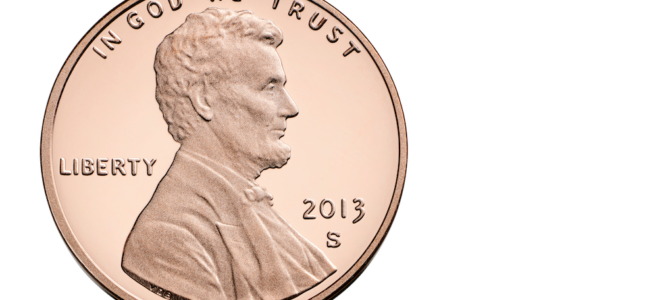
If you look very carefully at a penny, you’ll notice something you’ve probably never seen before: initials pressed into the dark underline of Lincoln’s bicep. Those initials stand for Victor David Brenner—the Jewish-American engraver, medalist, and designer of the Lincoln cent.
Brenner, born in Lithuania in 1871 and immigrated to the US in 1890, quickly became one of the country’s premier medalists. So premier, in fact, that a Lincoln design Brenner had made—Lincoln was a hero of his—attracted the attention of President Theodore Roosevelt, who commissioned him to produce the design to commemorate Lincoln’s 100th birthday in 1909. Before 1909, no American coin ever held the likeness of a real person—only allegorical figures like Liberty—so the inclusion of bona fide human being was fairly radical.
Since its first pressing, Brenner’s cent has been the longest running design in Mint history. Though there was a snafu: about halfway through its first year, people complained that Brenner’s initials were too large. Even the New York Times carped, saying why not throw Brenner’s address and even a picture onto the penny, too?
Ten years later, an updated penny minimized VDB, and stuck it just below Lincoln’s shoulder, where it remains, mostly hidden, today.
Full story here.
#AtmintisAtsakomybeAteitis